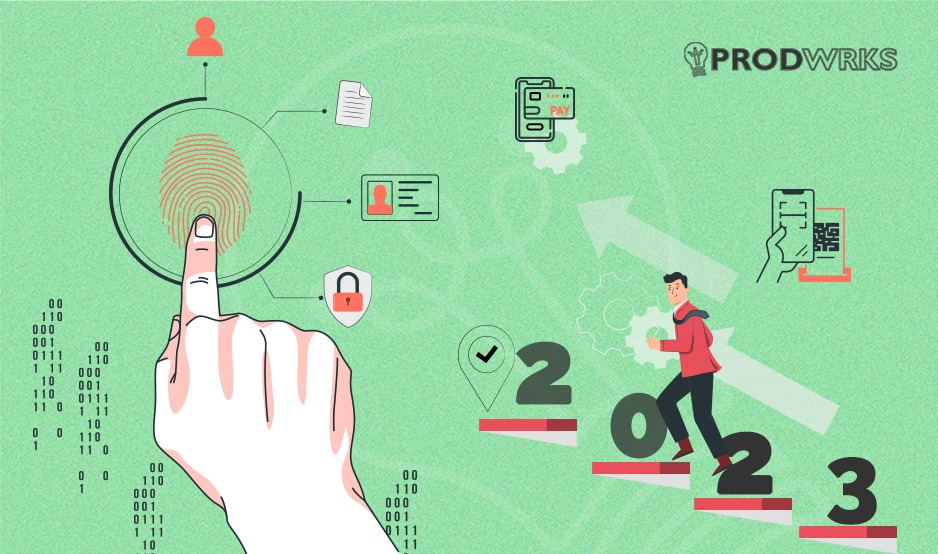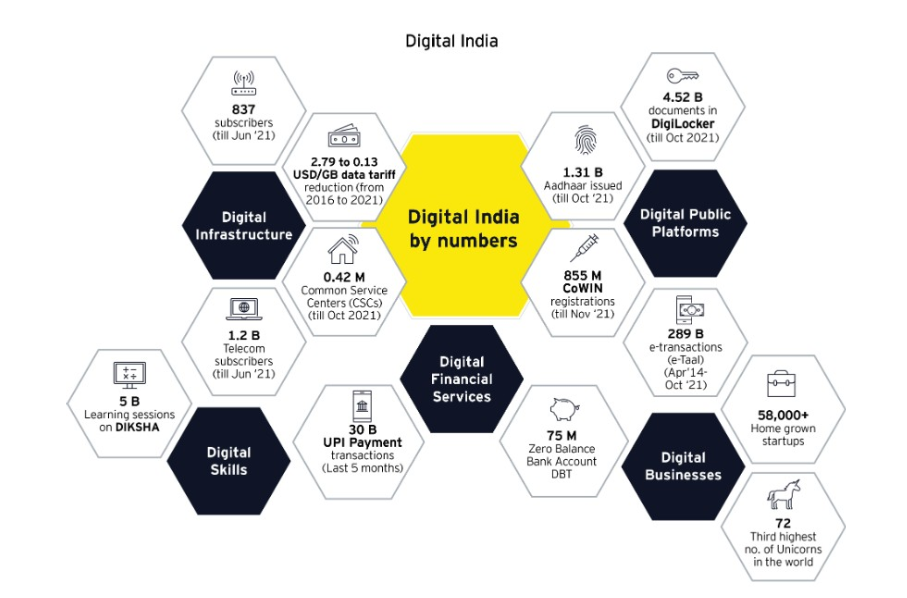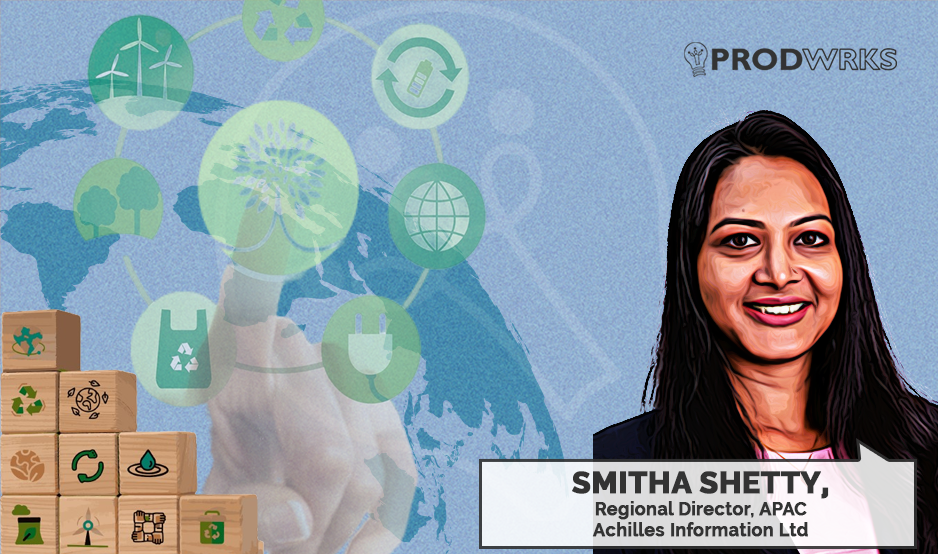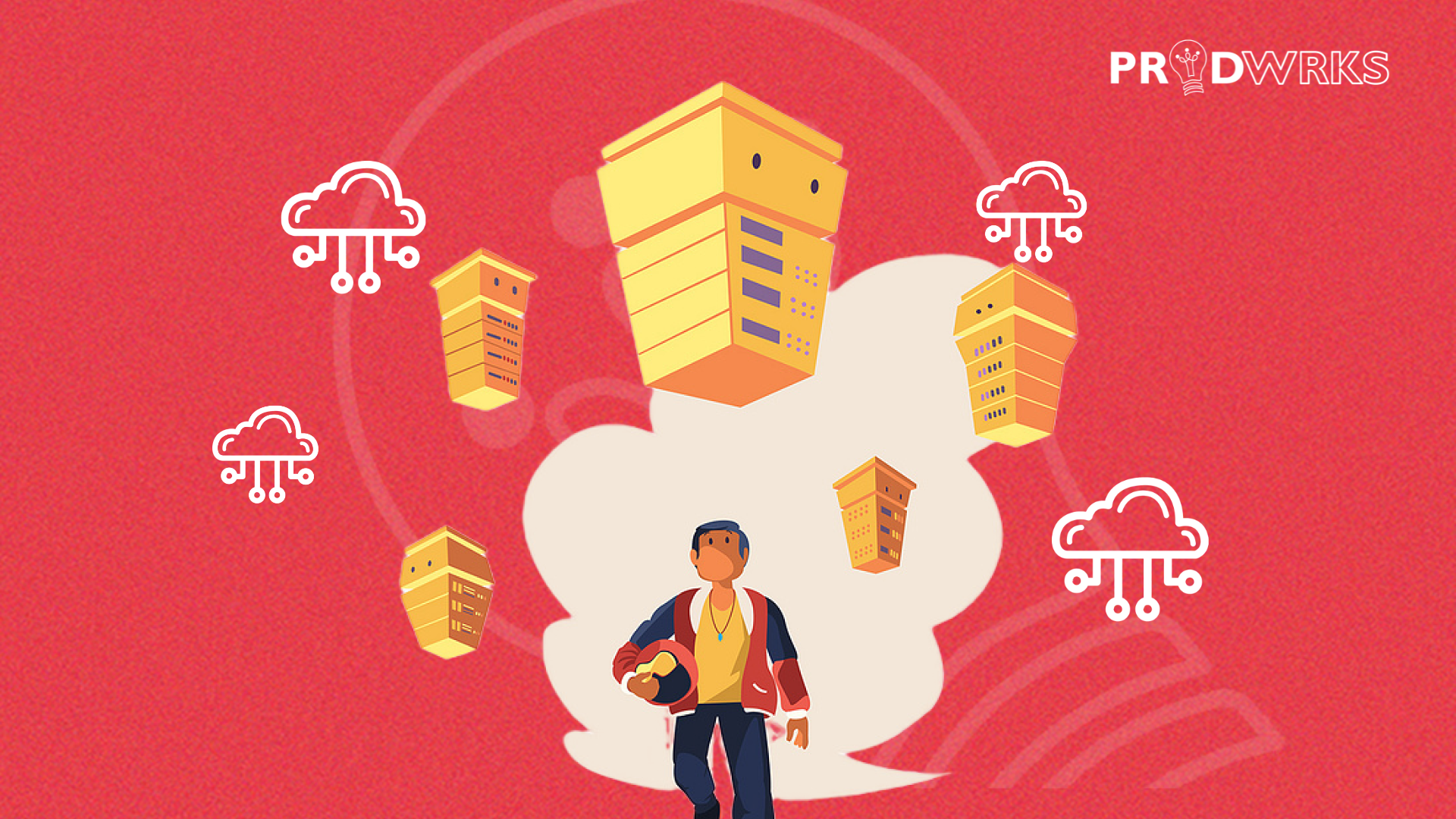
In 2022-23, over 100 billion digital payments were made in India, worth over ₹200 trillion. The value of instant digital transactions in India last year was far more than in the United States, Britain, Germany, and France. “Combine the four and multiply by four – it is more than that,” as one Indian cabinet minister, Ashwini Vaishnaw, told the World Economic Forum in January.
This is a testament to the success of India Stack. This article is the first in a series where we explore every component of India Stack – the Digital Public Infrastructure (DPI) of India.


What is India Stack?
India Stack is the moniker for a set of open APIs and digital public infrastructure goods (DPI) that assist governments in providing important services to their citizens. The APIs enable collaboration and exchange of critical information and transactions between citizens, businesses, and the government. The rapid adoption of India Stack APIs by billions of individuals and companies has helped promote financial and social inclusion.
For instance, the Aadhaar biometric identification number is one of the critical components of India Stack. Introduced in stages in 2009 by former Prime Minister Manmohan Singh, the Aadhaar is now used by 99% of Indian adults, with more than 1.3 billion IDs issued overall! It helps governments identify citizens and deliver services – from mid-day meal schemes to booking gas cylinders and opening bank accounts.
Understanding India Stack’s Service Delivery Models
India Stack aims to create a nationwide presence-less, paperless, and cashless service delivery model. The four distinct technology layers provided are
1. Consent Layer: A modern privacy data-sharing framework with an open personal data store owned by the Reserve Bank of India that allows data to move freely and securely to democratize the market for data.
2. Cashless Layer: A layer to help India become a cashless economy with an interoperable payment network with a single interface to all the country’s bank accounts and wallets to democratize payments comprising IMPS, AEPS, APB, and UPI.
3. Paperless Layer: A layer to help India become a paperless economy by storing and redeeming information where digital records move with an individual’s digital identity, eliminating the need for a massive amount of paper collection and storage. This refers to Aadhaar e-KYC, e-Sign, and the Digital Locker.
4. Presence-less Layer: A layer to help India become a presence-less economy with open API access where a universal biometric digital identity allows people to participate in any service from anywhere in the country, including the Aadhaar card and Mobile Aadhaar.
The Three Types of API Layers in India Stack
India Stack consists of three layers of open APIs: identity, payments, and data.
1. Identity Layer: This layer is anchored by Aadhaar, a unique biometric identification number issued to every Indian resident. Other components of the identity layer include eKYC, which allows businesses to verify the identity of customers electronically, and eSign, which enables digital signatures.
2. Payments Layer: This layer is anchored by the Unified Payments Interface (UPI), a real-time payment system that enables instant money transfers between bank accounts and mobile wallets. Other components of the payments layer include the Aadhaar Enabled Payment System (AEPS) and the Bharat Interface for Money (BHIM), which allow users to make payments using their Aadhaar number or mobile wallet.
3. Data Layer: This layer provides access to data from various government and private sector sources, empowering individuals and businesses to make informed decisions. Components of the data layer include the DigiLocker, a cloud-based platform for storing and sharing digital documents, and the Open Network for Digital Commerce (ONDC), a network that enables buyers and sellers to discover and transact with each other seamlessly.
Together, they enable online, paperless, cashless, and privacy-respecting digital access to various public and private services.
Critical Components of India Stack
1. Aadhaar: At the heart of India Stack lies the Aadhaar identity system, a 12-digit unique identification number issued to every resident of India. This biometric-based system, linked to an individual’s demographic and biometric information, is a foundation for multiple applications across various sectors.
2. eSign: It facilitates legally binding digital signatures, enabling citizens to sign documents electronically and eliminating the need for physical paperwork. This has streamlined processes in sectors like finance, insurance, and government services.
3. eKYC: This utilizes Aadhaar’s biometric authentication to verify an individual’s identity for various services, reducing the time and effort required for identity verification. This has expedited processes like opening bank accounts, availing loans, and obtaining SIM cards.
4. UMANG: UMANG is an app that provides a single platform for citizens to access government services from central and local government bodies.
5. API Setu: It is an open API platform that allows government departments to publish and consume APIs.
6. eCourts: This project includes
- eFiling, which allows for the electronic filing of legal papers.
- ePay, which allows for electronic payment of court fees.
- Virtual Courts, which allows for online adjudication of cases.
7. Unified Payment Interface: UPI, a real-time payment system, enables users to send and receive money instantly using smartphones. UPI has spurred the growth of mobile wallets, payment apps, and digital banking, transforming how Indians conduct financial transactions.
8. Immediate Payment Service: IMPS is India’s interbank electronic funds transfer system. IMPS allows individuals to send and receive money instantly using mobile phones or internet banking. IMPS is available 24/7 and can be used to transfer funds up to ₹2 Lakhs.
9. APB: Aadhaar Payments Bridge is a unique payment system that uses the Aadhaar number as a central key for electronically channelling government subsidies and benefits in the Aadhaar Enabled Bank Accounts (AEBA) of the intended beneficiaries.
10. AePS: It’s a payment system that allows users to perform banking transactions using their Aadhaar number and biometric authentication.
11. Bharat Interface for Money: BHIM is a mobile payment app that facilitates e-payments directly through banks and encourages cashless transactions.
12. DigiLocker: It is a cloud-based platform that allows citizens to store, access, and share their official documents and certificates digitally. This eliminates the need for physical documents and enhances convenience in accessing government services, educational records, and more.
13. Arogya Setu: It is an app for Indian COVID-19 contact tracing, syndromic mapping, and self-assessment.
14. eSanjeevani: it is a telemedicine service that provides online outpatient (OPD) consultations for citizens of India. It is the world’s largest telemedicine implementation in primary healthcare.
15. eOffice: A web application that allows governments to automate the entire file-processing workflow. It enables governments to perform core operations in a virtual “paperless” environment. eOffice is a digital workplace solution built on open architecture.
16. Poshan Tracker: An app that monitors the activities of Anganwadi centers, workers, and beneficiaries in real time. The app provides a 360-degree view of the activities of the Anganwadi Centre (AWC) and the service deliveries of Anganwadi Workers (AWWs).
The app also offers a complete beneficiary management system for pregnant women, lactating mothers, and children.
17. DIKSHA: It stands for Digital Infrastructure for Knowledge Sharing. It’s a national platform for school education and is used by teachers and students across India to provide school education remotely.
18. Government e-Marketplace: The GeM is an online platform for public procurement in India. GeM is used to create an open and transparent platform for government buyers.
19. E-Hospital: e-Hospital is a hospital management system that connects patients, hospitals, and doctors on a single digital platform. It covers major functional areas of a hospital, including patient care, laboratory services, and human resources.
20. National Non-Communicable Diseases Platform: The NCD Platform is a platform that allows for the examination, diagnosis, and management of non-communicable diseases.
21. ONDC: It is a network that enables online transactions for local commerce by acting as a middleman between buyers and sellers. Many banks and big e-commerce players like Flipkart, Dunzo, Magicpin, and Paytm are fully integrated into the platform.
22. OCEN: This decentralised network allows borrowers to interact with lenders to get small credit loans easily. OCEN was developed by the Reserve Bank of India (RBI) in collaboration with banks, non-banking financial companies (NBFCs), fintech companies, and other stakeholders.
23. FASTag: It is a device that uses Radio Frequency Identification (RFID) technology to pay tolls. It is attached to a vehicle’s windscreen and allows the user to drive through toll plazas without stopping for cash transactions.
24. mPassport: mPassport Seva is a mobile app that provides passport services for the Ministry of External Affairs (MEA) of the Government of India.
India Stack is Evolving in 2023 and Going Global
Although the name of our country’s Digital Public Infrastructure project bears the word India, the vision of India Stack is not limited to one country. India Stack can be applied to any nation, be it a developed one or an emerging one.
In the recently concluded G20, the world’s top 20 leaders unanimously adopted the New Delhi Declaration – a voluntary framework proposed by India for the development and deployment of Digital Public Infrastructure (DPI). With the declaration officially adopted, India’s push for the global adoption of the India Stack has received a boost.
DPI Repository: The declaration mentions the approval of India’s plan to build and maintain a global repository, which will be a virtual stack where non-G20 and G-20 countries can share their open-source mechanisms to drive a mutually beneficial ecosystem.
One Future Alliance: The declaration also “takes note” of India’s proposal to create One Future Alliance, which is a voluntary initiative aimed at building capacity, and providing technical assistance and adequate funding support for implementing digital public infrastructure in low and middle-income countries.
This year, India signed agreements with Armenia, Sierra Leone, Suriname, Antigua & Barbuda, Papua New Guinea, and Trinidad and Tobago to export the India Stack. In addition, UPI, which accounts for 68% of all payment transactions in India, has been exported to France, UAE, Singapore, and Sri Lanka!
“Our mission as a nation is to offer India Stack or the part of the Stack to those enterprises and countries across the world who want to innovate and further integrate, execute, and implement digital transformation,” said Rajeev Chandrasekhar, Minister of State (MoS) for Electronics and Information Technology.
The government is also working on adding over 20 new services to India Stack.
“No part of the government will be left without being digitized. You will see DPI now spanning the entire spectrum of current government public services and anything we are planning in the future. I think at least 20 to 30 new applications will pile up on the India DPI that will be addressing different slivers of the Public Service stack that is the India Stack or India DPI,” said Rajeev.
In the B20 Summit held in New Delhi, Nandan Nilekani, Chairman and Co-Founder, Infosys and Founding Chairman, UIDAI (Aadhaar), said what DPI achieved in 9 years is incredible. Otherwise, this development could have taken 47 years easily.
India Stack has revolutionized how Indians interact with their government, businesses, and each other. It has made it easier and more convenient for citizens to access government services and conduct financial transactions. It has also helped companies to streamline their operations and reach new customers. India Stack has profoundly impacted the Indian economy and society, making India a global leader in digital transformation.



